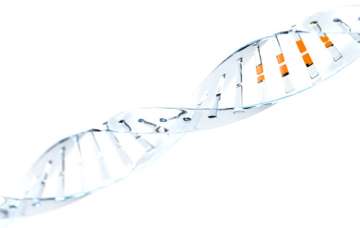Delivering the Right Treatment

Delivering the right treatment, every time, to the right person
Inflammatory bowel disease (IBD) is generally divided into two subtypes: ulcerative colitis and Crohn’s disease. But David Padua, MD, PhD, an assistant professor in the UCLA Vatche and Tamar Manoukian Division of Digestive Diseases and member of the research faculty at the UCLA Center for Inflammatory Bowel Diseases, is among a growing number of experts who suspect that IBD actually consists of many different subtypes — which may explain why it can be so hard to predict how an individual IBD patient will respond to a particular therapy.
“IBD can involve many different interactions in the body — diet and environmental exposures interface with genetics at the epithelial cell level as well as at the immune cell level, and if any of those go awry, that can lead to IBD,” Dr. Padua explains. “We have many pathways we can currently target to manage the inflammatory process with our current armamentarium of drugs, and many new drugs are in the pipeline looking at other strategies. But because IBD is so complex and there appear to be so many subtypes, the question is always which one to start with, and which one to move on to if the first medication doesn’t work. Currently, it’s a wait-and-see approach, but every clinician would love the ability to know in advance what therapy will work and what won’t for a given patient.”
“While this is an exciting time for IBD, it can be a confusing landscape for patients and providers, as novel therapies with various mechanisms of action become available,” adds Jenny Sauk, MD, the UCLA IBD center’s director of clinical care and an assistant clinical professor in the division. “With all of these promising therapies, it would be great to have sub-diagnostics to help guide our treatment decisions, and to better understand which patients are going to be at the highest risk of progression and complications. That’s the promise of applying precision health to IBD.”
The revolutions in genomic and information technologies are paving the way for the fulfillment of a long-held dream among clinicians — healthcare that takes into account individual characteristics to optimize diagnosis, treatment and prevention strategies. Seizing on the unprecedented opportunities, UCLA in 2017 launched the Institute for Precision Health to, among other things, facilitate large-scale initiatives in genetic and genomic medicine and promote innovative discoveries that will help to usher in the new era.
“Advances in genetics and genomics are allowing us to have a complete picture of someone’s genetic makeup in a cost-effective manner, and to integrate that with other forms of genomic data,” says Daniel Geschwind, MD, PhD, senior associate dean and associate vice chancellor of precision health at UCLA. “This will help us to get a better grasp of which disorders individuals are at high risk for, or to better understand what is causing a current disorder and use that knowledge to optimize their treatment. At the same time, with the advances in computer science, machine learning and engineering, we can analyze the ‘big data’ we are collecting in ways that will present new patterns and generate totally new understandings of what is driving a particular disease.”
Clara Lajonchere, PhD, deputy director of the Institute for Precision Health at UCLA, believes the university is uniquely positioned to capitalize on these advances. “UCLA Health has established a substantial infrastructure, touching more than 4.7 million lives, with a robust electronic health record,” she says. “That, combined with the incredible diversity of Los Angeles, will allow us to capture genetic variability as we take a population health approach. And when you think about precision health, no single discipline can do this alone. UCLA not only has a world-class health system, but we have all of the medical school departments, engineering, computer science, bioinformatics, and all of the relevant social and physical sciences together on the same campus in a way that fosters the interdisciplinary collaboration that this undertaking requires.”
In bringing together these faculty, the institute is facilitating the development of platforms for big data integration, clinical diagnostics, and patient biobanking. The UCLA AtLAs California Health Initiative will create a biobank of nearly 150,000 blood samples from a representative cross-section of consenting UCLA patients, collected across many clinics at UCLA over a three-year period. This genotyping effort will likely include tens of thousand of patients with GI conditions, Dr. Geschwind says, providing a potential treasure trove of data for researchers. The institute will also apply technologies such as data-mining and machinelearning approaches.
The UCLA Vatche and Tamar Manoukian Division of Digestive Diseases is an active partner in the AtLAs Project and other institute initiatives. “We want to recruit as many of our patients to this effort as possible,” Dr. Sauk says. “As gastroenterologists we can provide not only blood samples for genetic analysis, but also tissue samples from colon biopsies, which we can then correlate with the genetic findings to learn more about how patients’ genetic makeup influences their response to therapy or their disease trajectory.”
“We are likely to discover over time that there are multiple subtypes of inflammatory bowel diseases, well beyond the current classifications,” Dr. Padua says. “The field of oncology is increasingly looking at the molecular mechanisms that are driving the tumor, and selecting therapies that address that specific aberration. We need to do that in IBD, and the only way to get there is through this precision health approach.”